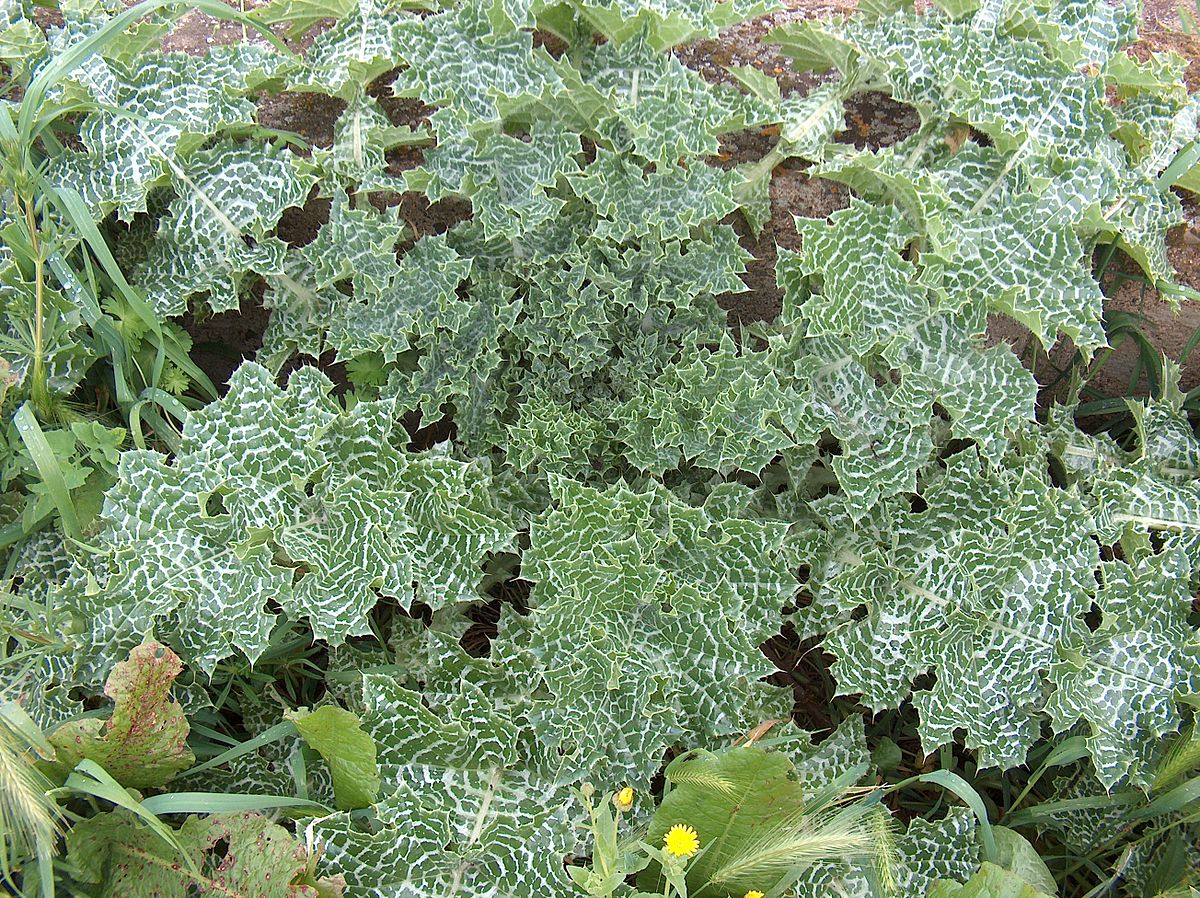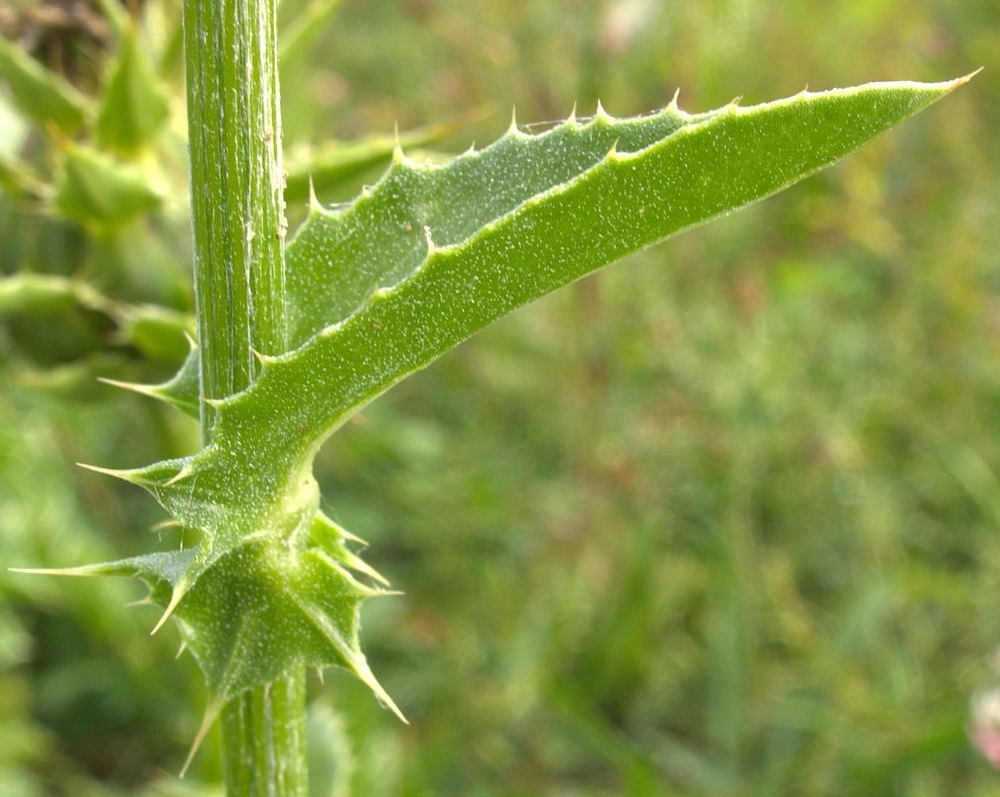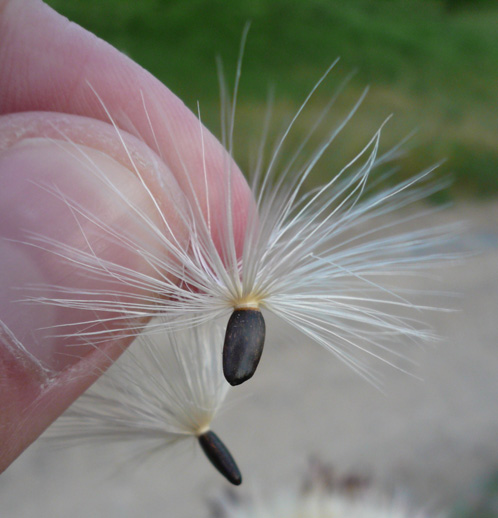Milk Thistle

Milk Thistle
(Silybum marianum)
Priority: - Prevent / EDRR
Tags: Terrestrial | Toxic
Identification and Reproduction
Identification:
- Milk thistle is a large conspicuous thistle that reaches heights between 0.6 and 2 m tall.
- Rosettes will have large, thick, succulent leaves that have white variegation and short yellow prickles.
- Leaves are shiny, lobed, spiny and green with white variegation. Basal leaves are are large, reaching up to 70 cm long. Leaves along the stem are clasping.
- Purple flowers form at the end of stems, are between 2-6.5 cm wide and is surrounded by projecting spines. Flowers appear between April and July.
Reproduction:
- Reproducing by seed, each plant produces over 6,000 seeds annually.
- Seeds can remain viable in the soil for up to 9 years.
- Seeds have a long white pappus that allows for easy wind dispersal.
Habitat & Ecology
- Milk thistle is commonly found along roadsides, in ditches, fertile fields and other disturbed areas.
- It typically is only found on high fertility soils.
Impacts
Social:
- This plant is poisonous to livestock. Toxicity increases as the plants begin to wilt after being cut or damaged during plowing or when soil moisture is too high.
- Can also injure livestock from the presence of sharp spines.
- Reduces forage opportunities and crop yields.
Ecological:
- Can form dense stands that restrict large wildlife movement.
- Can be very competitive under certain conditions, out-shading and outcompeting native species for water and nutrients.
Management
Prevention is a high priority for this plant.
- Learn to identify this plant and remove it off your property if you spot it.
- Clean clothing, pets, equipment and vehicles prior to leaving an infested site.
Mechanical/Manual Control:
- Cultivation can help destroy establishing seedlings.
- Mowing plants prior to seedset can reduce seed dispersal. Be cautious as this may increase the danger of livestock poisoning.
- Hand pulling should only be done with small patches.
- Be sure to wear gloves, long sleeves and pants when dealing with plants as they are covered in spines.
Chemical Control:
- The most effective herbicide on milk thistle is 2,4-D. Apply between seeding and rosette stage of growth for optimal efficacy.
Resources
For more details check out BugwoodWiki's datasheet on Silybum marianum.
Header photo (Zeynel Cebeci).






